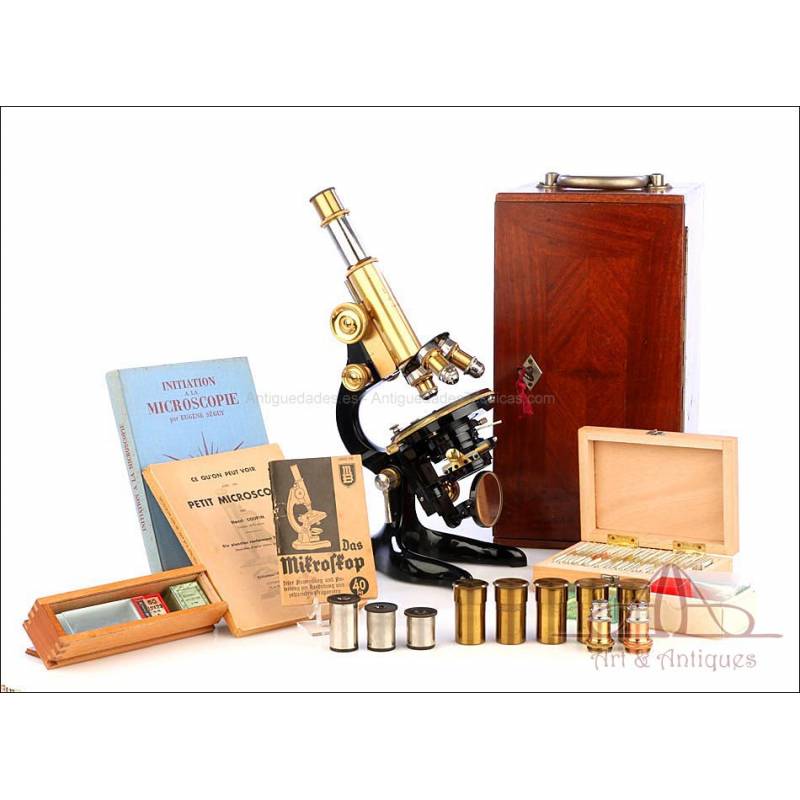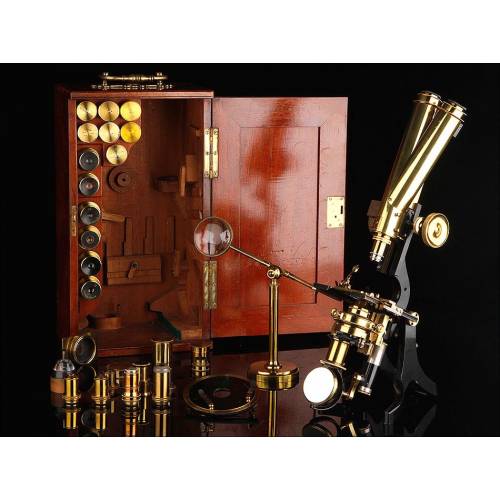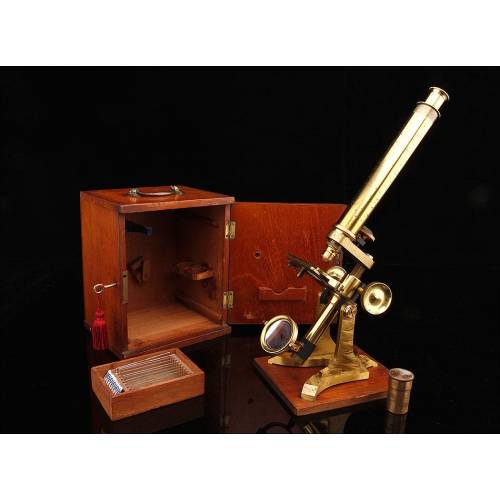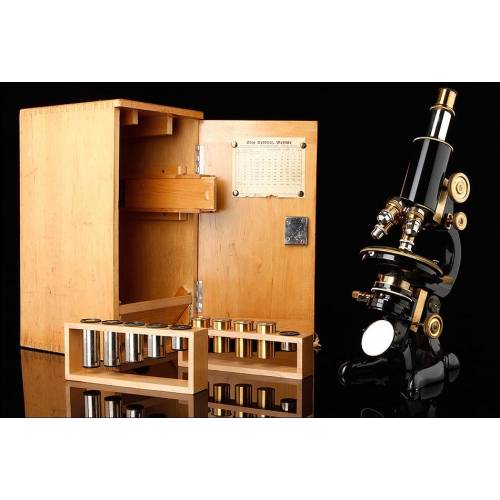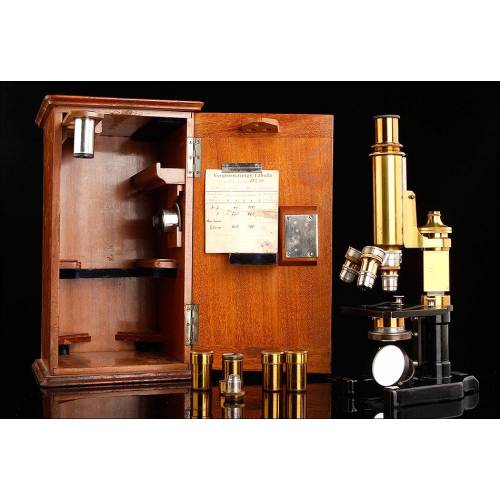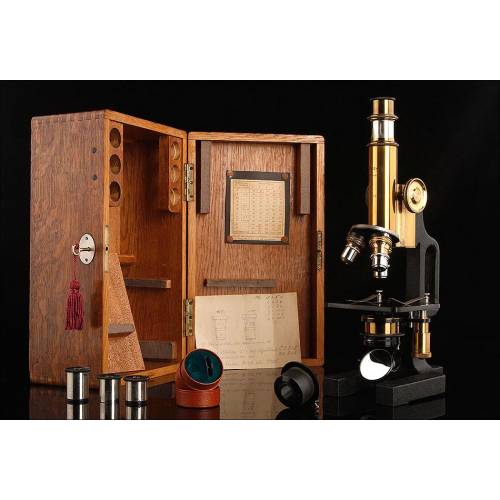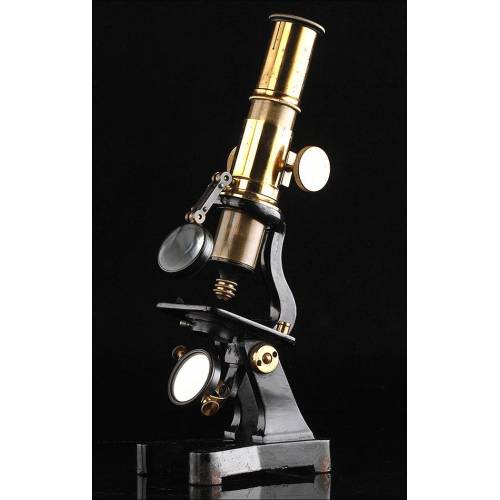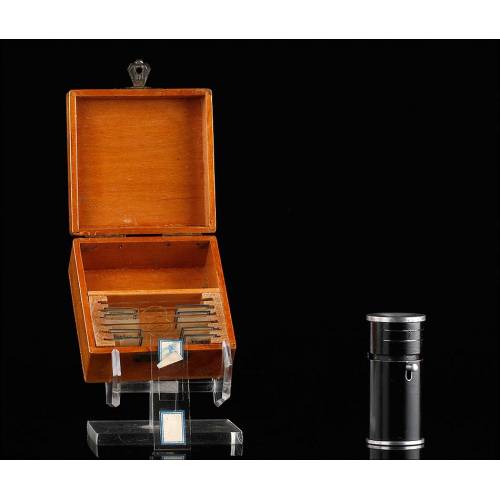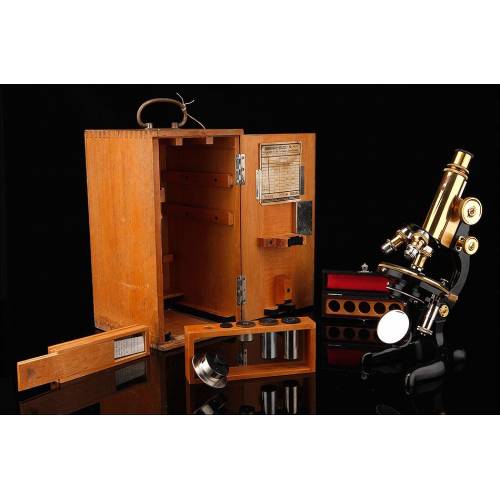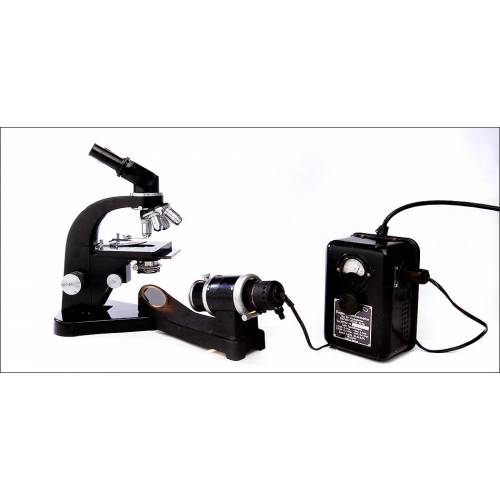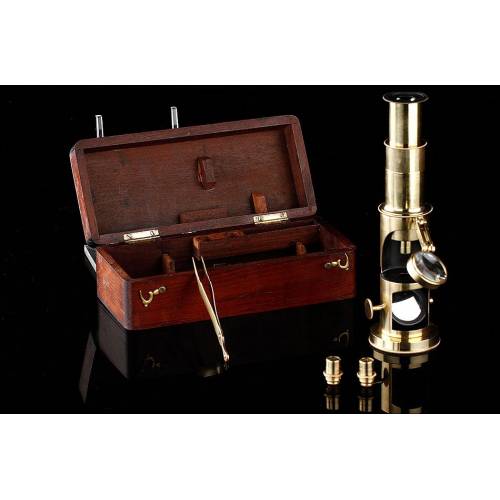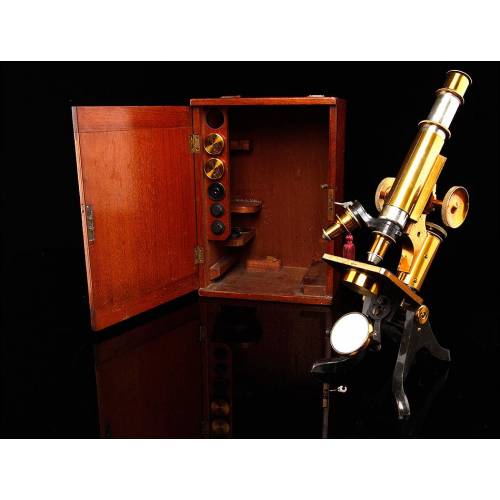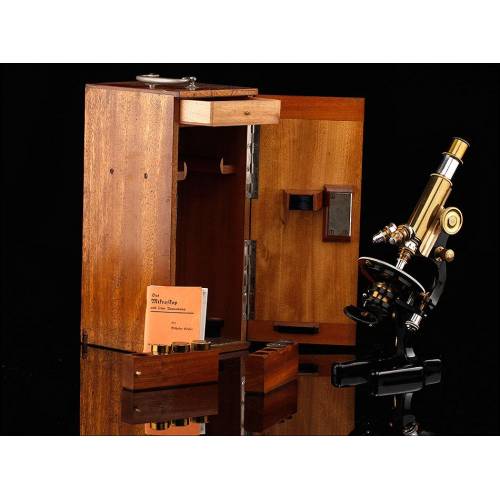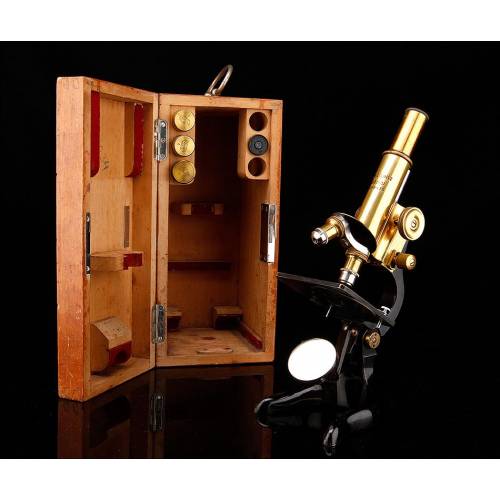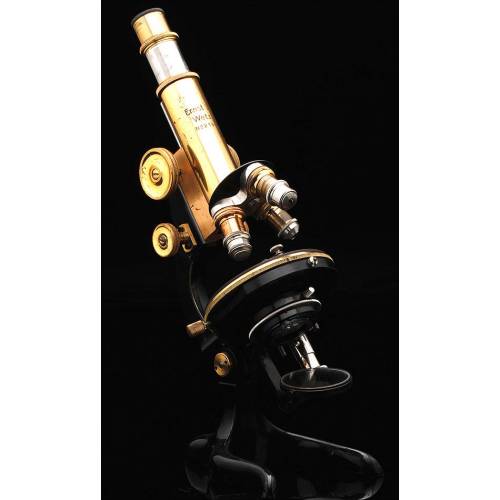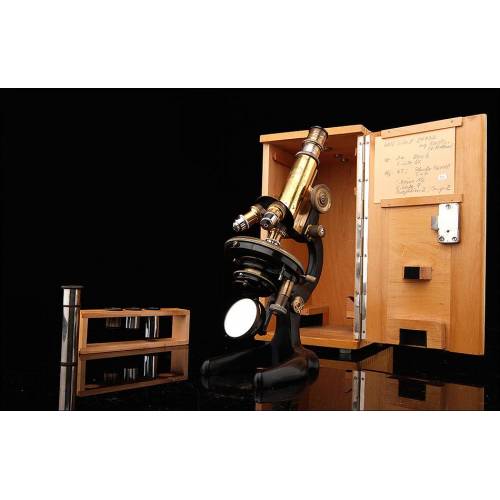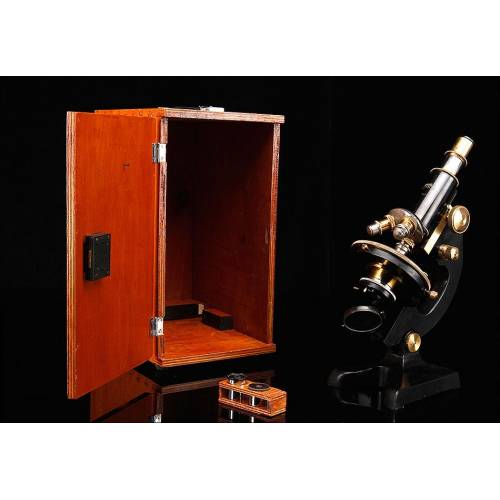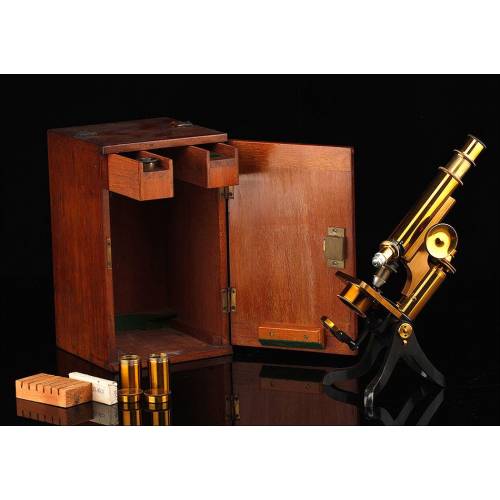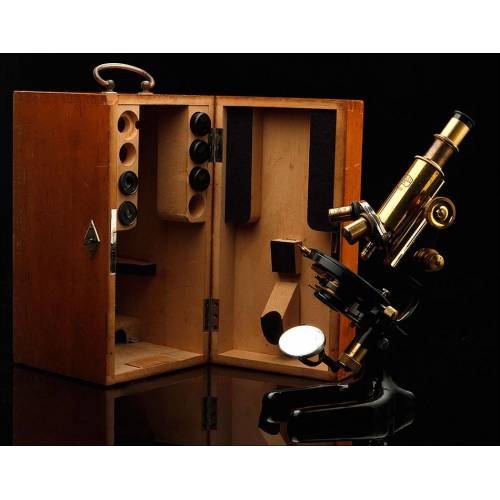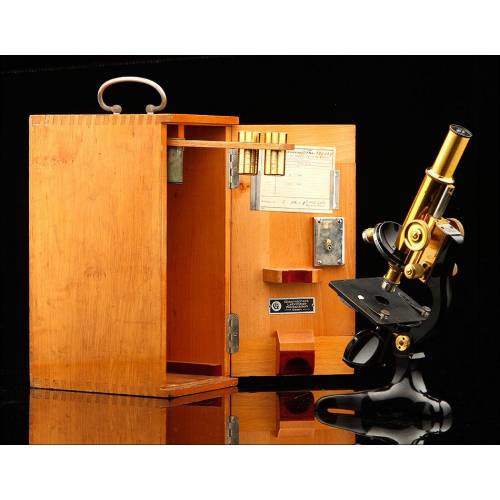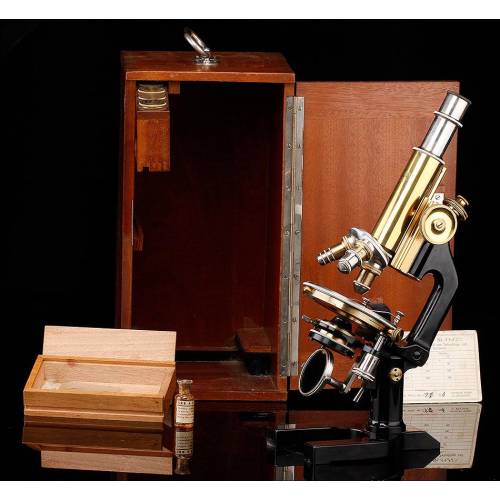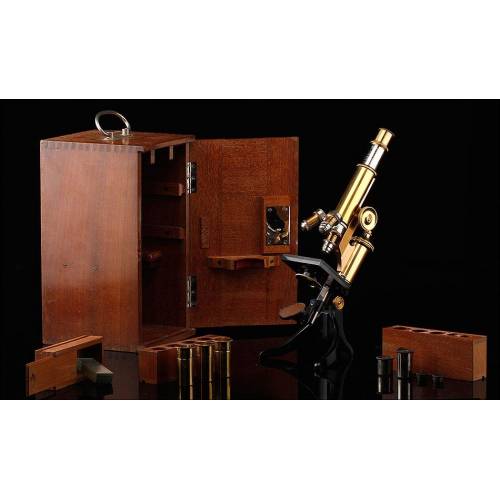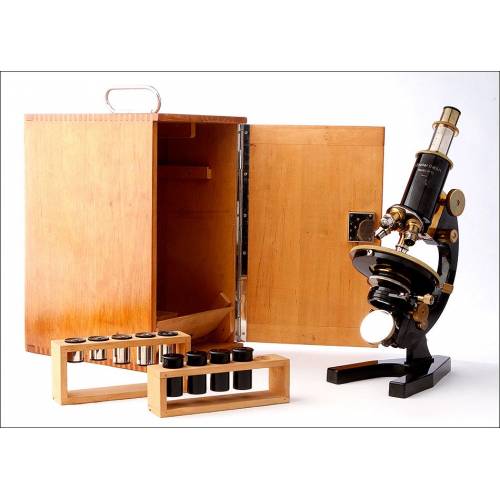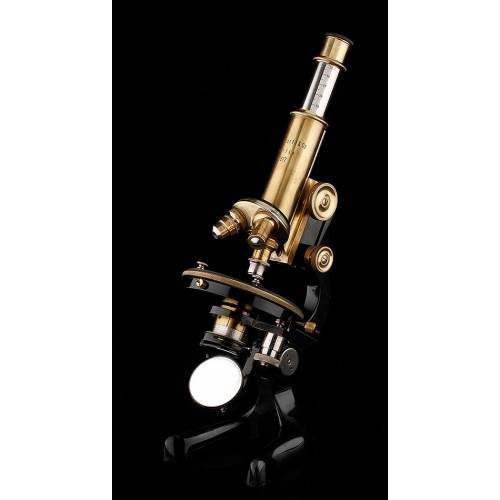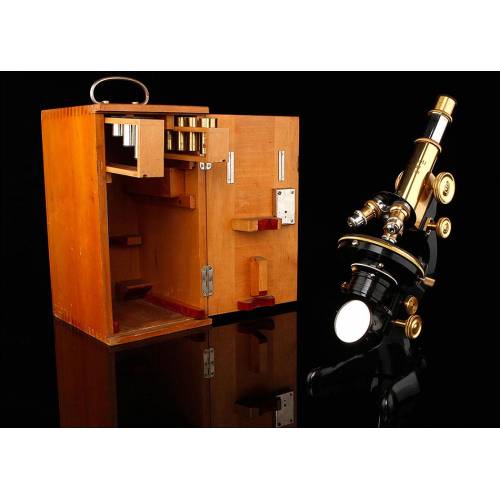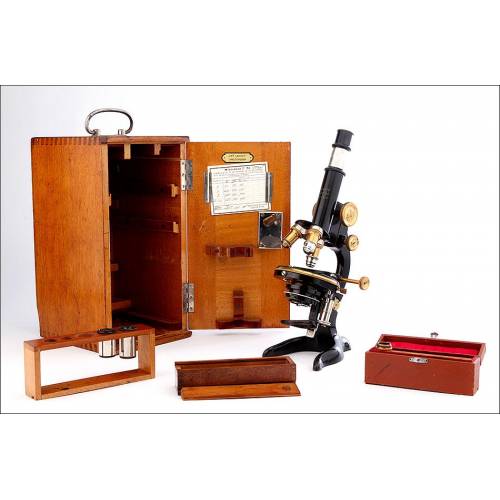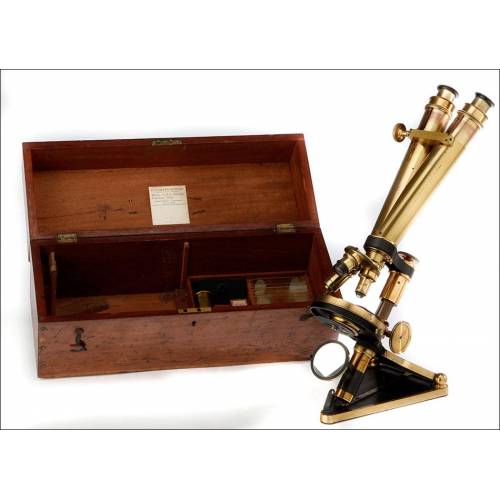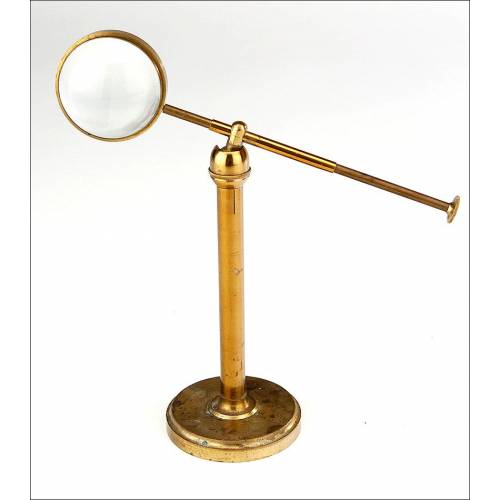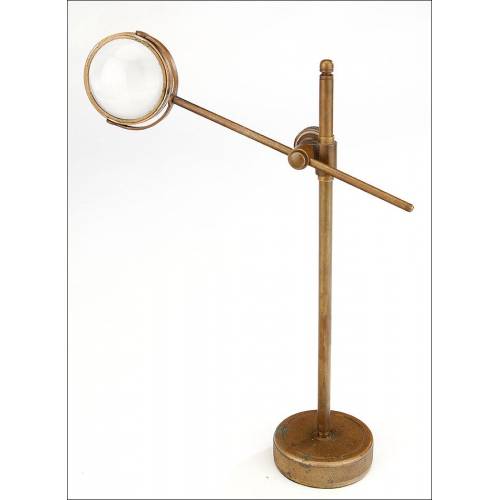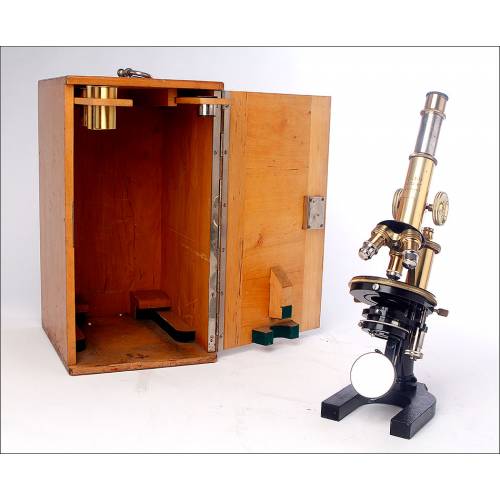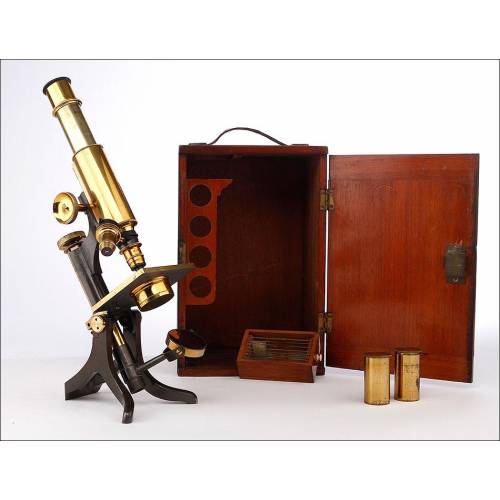D-829
Extraordinary Antique Microscopy Set. Leitz Microscope. Germany, 1914
Amazing set of Leitz microscope with books, samples and accessories. Early 20th century. In outstanding condition.
Sold!
Extraordinary antique microscopy set with a Leitz microscope, coming from Germany and made in 1914. The set contains a fully original antique microscope in perfect condition, with its mahogany storing case and different accessories: several microscopy books, a collection of samples of insects in its wooden box, 5 objectives, 4 eyepieces and a set of material for preparing samples. The microscope is in excellent working order; its serial number 166880 matches with one at the wooden case and the identification card. All the elements which make up the set are original from the era and create a really interesting article for any collector. The microscope stands out for its classic and complex design, as well as for its superb condition. It has a black-enameled horseshoe foot, with a shiny and uniform finish which looks as good as the first day. The same can be said about the rest of the instrument, with different chrome-plated and brass component parts. The brass is protected by the original transparent lacquered finish which provides it with a really attractive patina. The four-lens revolving nosepiece, the rack-and-pinion system and the double shutter work fine and move fluidly and softly, turning the operation into a real pleasure for the user. The turret bears the manufacturers name engraved at the front. The storing case is made of solid mahogany wood. At the door, the wooden parts have been disposed to create a fine diamond desing. The lock and the key are original and work perfectly. The three books included are in French and German and preserve the great charm of early-20th-century publications. Finally, the collection of samples may be small but it is a really interesting addition. Very complete and in striking condition, this extraordinary antique microscopy set with a Leitz microscope is worthy to belong to a science museum or the best collection. Dimensions: Width: 4.92 in / 12.5 cm. Height: 14.17 in / 36 cm. Depth: 6.69 in / 17 cm.Ernst Leitz Wetzlar History The beginnings of the famous optic material manufacturing company named Ernst Leitz Wetzlar can be found in the first half of the 19th century, when the mechanic and selft-taught mathematician Carl Kellner founded the Carl Kellner Optisches Institut in Wetlzar, Germany. After his early death his widow maintained the business, and in 1864 the mechanical engineer Ernst Leitz entered the company. Just five years later, Leitz took control of the firm and changed its name for Ernst Leitz Wetzlar. Leitz led the company to success after introducing improvements such as serial production, raising sales volume rapidly after 1871. Leitz microscopes included technical improvements that increased their quality; by the late 19th century the company already had a worldwide reputation. Ernst Leitz died in 1920 and the leadership of the firm passed to his son. As well as for their microscopes and optic material, Leitz became hugely famous for their famous Leica cameras (abbreviation of Leitz Camera).

